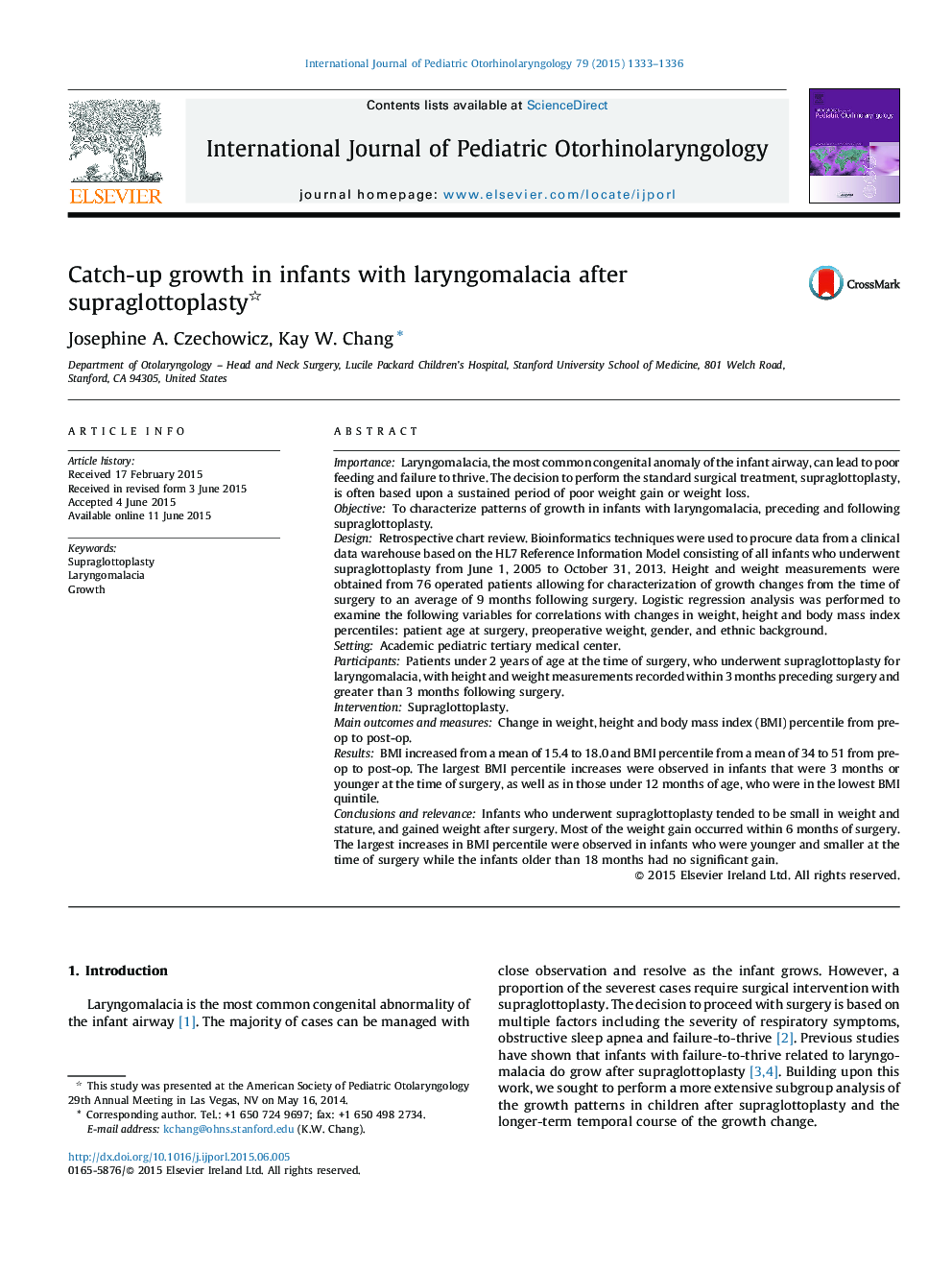| کد مقاله | کد نشریه | سال انتشار | مقاله انگلیسی | نسخه تمام متن |
|---|---|---|---|---|
| 4111675 | 1605993 | 2015 | 4 صفحه PDF | دانلود رایگان |
ImportanceLaryngomalacia, the most common congenital anomaly of the infant airway, can lead to poor feeding and failure to thrive. The decision to perform the standard surgical treatment, supraglottoplasty, is often based upon a sustained period of poor weight gain or weight loss.ObjectiveTo characterize patterns of growth in infants with laryngomalacia, preceding and following supraglottoplasty.DesignRetrospective chart review. Bioinformatics techniques were used to procure data from a clinical data warehouse based on the HL7 Reference Information Model consisting of all infants who underwent supraglottoplasty from June 1, 2005 to October 31, 2013. Height and weight measurements were obtained from 76 operated patients allowing for characterization of growth changes from the time of surgery to an average of 9 months following surgery. Logistic regression analysis was performed to examine the following variables for correlations with changes in weight, height and body mass index percentiles: patient age at surgery, preoperative weight, gender, and ethnic background.SettingAcademic pediatric tertiary medical center.ParticipantsPatients under 2 years of age at the time of surgery, who underwent supraglottoplasty for laryngomalacia, with height and weight measurements recorded within 3 months preceding surgery and greater than 3 months following surgery.InterventionSupraglottoplasty.Main outcomes and measuresChange in weight, height and body mass index (BMI) percentile from pre-op to post-op.ResultsBMI increased from a mean of 15.4 to 18.0 and BMI percentile from a mean of 34 to 51 from pre-op to post-op. The largest BMI percentile increases were observed in infants that were 3 months or younger at the time of surgery, as well as in those under 12 months of age, who were in the lowest BMI quintile.Conclusions and relevanceInfants who underwent supraglottoplasty tended to be small in weight and stature, and gained weight after surgery. Most of the weight gain occurred within 6 months of surgery. The largest increases in BMI percentile were observed in infants who were younger and smaller at the time of surgery while the infants older than 18 months had no significant gain.
Journal: International Journal of Pediatric Otorhinolaryngology - Volume 79, Issue 8, August 2015, Pages 1333–1336
